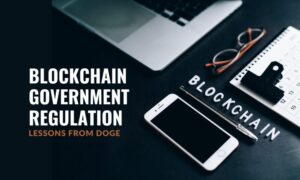2025 Update: Blockchain Revolutionizes Transparent, Secure Supply Chains

The Transformative Role of blockchain in Modern Supply Chains
Understanding the Trust Deficit
In today’s interconnected world, supply chains are not merely conduits for products; they embody commitments regarding origin, safety, compliance, and sustainability. As we approach 2025, upholding these commitments has become increasingly challenging. Markets are still plagued by counterfeit goods, and traditional documentation methods remain susceptible to fraud. Various systems often fail to communicate effectively, leading to a significant erosion of trust, which is essential for global trade.
- Understanding the Trust Deficit
- blockchain: A Solution to Trust Issues
- The Core Functions of blockchain
- Provenance
- Smart Contracts
- Auditability
- Real-World Applications of blockchain
- Enhancing Cybersecurity with blockchain
- Overcoming Integration Challenges
- The Imperative for blockchain in 2025
- Conclusion: blockchain as an Operational Foundation
blockchain: A Solution to Trust Issues
blockchain technology is emerging as a crucial solution to the trust deficit that plagues supply chains. The complexity of modern supply chains, which span multiple countries and cultures, often results in a lack of transparency regarding the origins of materials. Manufacturers struggle to verify their sources, retailers rely on fragile documentation, and regulators face challenges in validating claims about sustainability and labor practices.
This issue is fundamentally about data trust rather than technology. blockchain addresses this by providing a unified, tamper-proof ledger that allows all authorized participants—suppliers, auditors, regulators, and buyers—to access and contribute to a shared source of truth.
The Core Functions of blockchain
At its essence, blockchain is a decentralized and immutable database. Each transaction is securely time-stamped and linked to previous entries, ensuring that once data is recorded, it cannot be altered without consensus from the entire network. This technology offers three critical benefits for supply chains:
Provenance
blockchain enables a verifiable record of the journey from raw materials to finished products, ensuring transparency at every stage.
Smart Contracts
It automates the enforcement of agreements, facilitating everything from payment triggers to compliance with regulations.
Auditability
blockchain provides a permanent, tamper-resistant log that can be accessed by auditors, customers, and internal teams, enhancing accountability.
Real-World Applications of blockchain
blockchain is not just theoretical; it is actively being utilized by leading companies across various industries:
- Renault Group has transitioned its entire supply chain documentation to blockchain, resulting in real-time compliance and improved document sharing within its automotive network.
- The Home Depot has implemented blockchain to enhance visibility among suppliers, minimize disputes, and expedite issue resolution.
- Valencia Port Foundation is collaborating with IBM to incorporate blockchain into its logistics, facilitating secure data exchanges among shippers, customs, and terminal operators.
- A pilot project involving KPMG, Merck, IBM, and Walmart showcased how blockchain can reduce drug traceability from 16 weeks to just 2 seconds, significantly combating counterfeit drugs.
- Vertrax blockchain has enabled real-time logistics tracking in the energy sector during periods of high demand caused by severe weather.
- IBM Food Trust continues to expand its capabilities, allowing retailers to trace fresh produce from farm to shelf, which is vital for managing food safety and recalls.
Enhancing Cybersecurity with blockchain
The decentralized nature of blockchain inherently boosts its resilience, eliminating single points of failure. Each transaction is encrypted and linked, making unauthorized alterations nearly impossible. When combined with IoT and digital twins, blockchain forms a secure “digital thread” that maintains integrity from raw material sourcing to final sale. Predictive analytics can be layered on top to detect anomalies in real time, addressing potential issues before they escalate.
Overcoming Integration Challenges
While blockchain offers numerous advantages, it is not a one-size-fits-all solution. Successful implementation requires:
- Collaborative Governance: Establishing shared governance across ecosystems.
- Standardized Data Models: Ensuring consistency in data formats among trading partners.
- Seamless Integration: Connecting blockchain with core systems like ERP, PLM, and SCM.
- Change Management: Fostering training and stakeholder engagement to facilitate adoption.
Technology alone will not guarantee a return on investment; a paradigm shift in how supply chains perceive data is essential. Data should be viewed as shared assets that contribute to collective value rather than proprietary control points.
The Imperative for blockchain in 2025
Three key factors underscore the necessity of blockchain in the coming years:
- ESG and Regulatory Pressures: Governments are increasingly mandating traceability for not just carbon emissions but also labor practices and ethical sourcing.
- Consumer Demand for Transparency: Today’s consumers expect to know the origins and production processes of the products they purchase, often through QR codes.
- Need for Resilience: In a world marked by geopolitical tensions, climate change, and cyber threats, having access to reliable, real-time data is crucial for survival.
Conclusion: blockchain as an Operational Foundation
blockchain has evolved from a theoretical concept to a vital operational component in supply chains. It transforms integrity from a mere ideal into a verifiable asset. For businesses navigating an uncertain landscape, blockchain offers not just security but also clarity. In an era where trust must be continuously earned, blockchain not only supports supply chains but also fortifies them.







